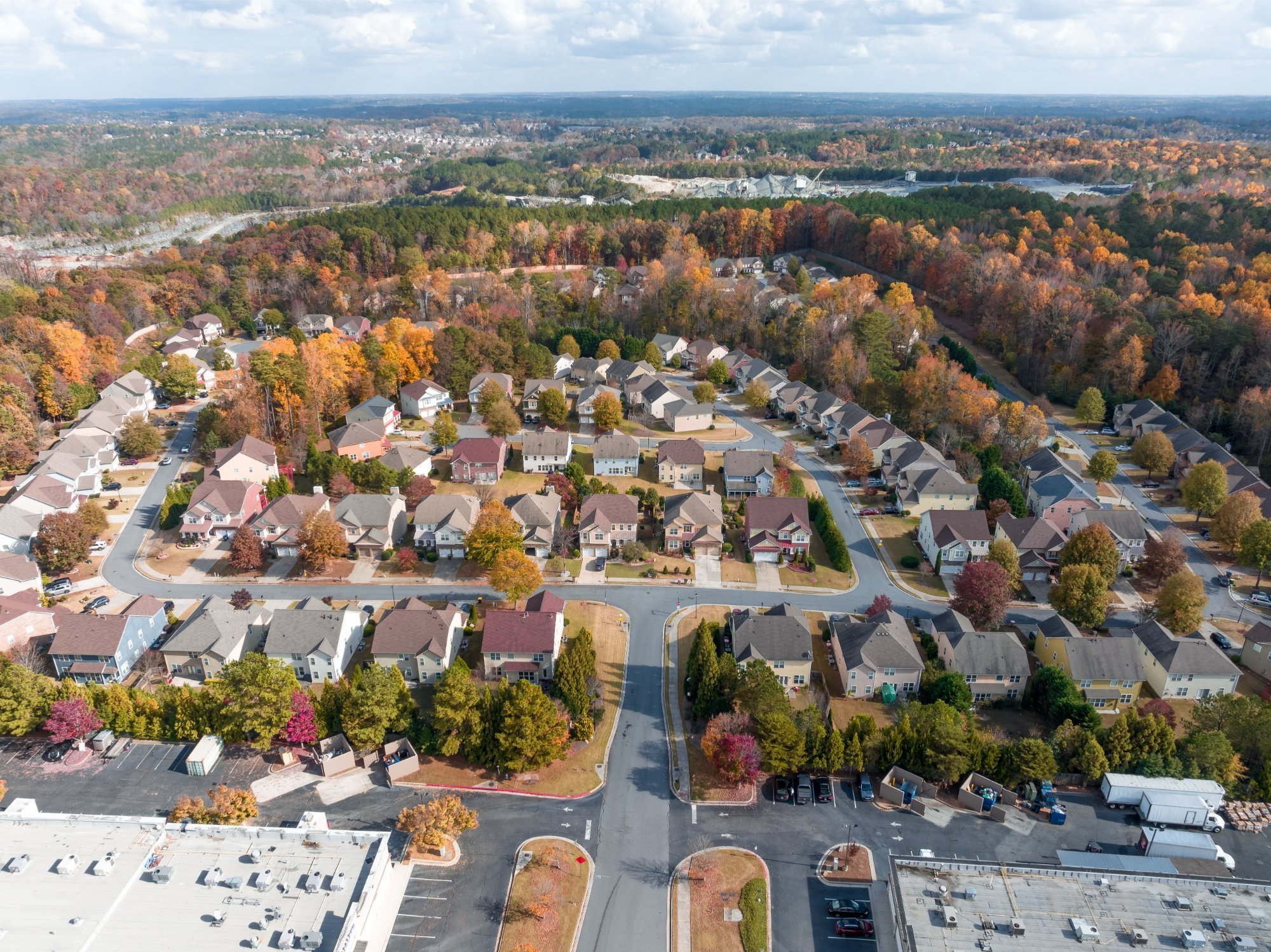North Carolina's housing market in late 2025 is a complex puzzle, with pieces that don't always fit neatly together. Home prices in Charlotte have jumped 15% since last year, while Raleigh's inventory has shrunk by a third. These shifts affect everyone – from first-time buyers to long-time homeowners. This article digs into the nitty-gritty of NC's current market, focusing on inventory levels, home prices, and affordability. We'll look at what's driving these changes, from interest rates to buyer demand, with a special focus on Cleveland and Gaston counties. You'll get a clear, data-driven picture of where the market's headed as we approach 2026. Whether you're thinking of buying, selling, or just keeping an eye on your property value, this information will help you make smart decisions. We'll break down the trends without the jargon, so you can understand what it all means for your wallet and your future. Ready to get the inside scoop on NC's housing market? Let's dive in and see what the numbers tell us about your next move in real estate.
Key Market Trends Shaping Late 2025
North Carolina's residential property scene shows significant shifts across multiple indicators. Statistical data reveals substantial changes in property availability, pricing dynamics, lending rates, and sales timelines - creating a transformed landscape for both buyers and sellers.
Home Inventory Increase
Property listings across NC have grown by one-fifth since January, marking the most substantial quarterly rise since 2020. Durham and Raleigh lead this expansion, with "nearly one in five listings saw price cuts in May", particularly in suburban areas. The surge gives house hunters more options and bargaining power, especially in previously tight markets like Charlotte's outskirts.
Median Home Price
Property values continue their upward trajectory, reaching $390,200 - a modest but notable 2.2% climb from previous quarters. This increase reflects sustained demand despite expanded choices. The appreciation rate varies significantly by neighborhood, with some areas seeing faster growth while others maintain steadier prices. Single-family homes in prime locations command premium rates, while townhouse prices show more flexibility.
Mortgage Rates Impact
The current 7.02% average rate creates distinct challenges for financing. Monthly payments on typical loans have increased substantially, affecting purchasing power across all buyer segments. Some lenders offer specialized programs to offset these rates, including adjustable options and first-time buyer incentives. The higher rates have cooled bidding wars but haven't eliminated serious buyers from the market.
Market Time Opportunities
Properties now spend more days listed before selling, giving buyers room to evaluate options carefully. This extended timeline allows for thorough inspections and thoughtful negotiations. Sellers adapt by presenting homes in prime condition and setting realistic prices from the start. The pace varies by property type - with "townhouses and condos up 38.9% year-over-year" showing particularly interesting dynamics.
Strategic timing and careful market analysis determine success in this evolving environment. Buyers leverage extended listing periods to negotiate effectively, while sellers adjust pricing strategies to match current conditions. Local market knowledge proves crucial as different neighborhoods show varying patterns in both pricing and time-to-sale metrics.
Understanding Local Dynamics in Cleveland and Gaston Counties
Cleveland County's median home price of $237,497 stands significantly below North Carolina's broader market figures, making it a prime spot for cost-conscious buyers. This price point, showing a 5.4% decrease from last year, puts homeownership within reach for many first-time buyers and growing families. The median price per square foot of $160 translates to practical savings - buyers get more living space for their money compared to pricier regions in the state. These numbers mean real monthly savings on mortgage payments and lower down payment requirements.
The housing supply has shifted in buyers' favor, with 75 homes sold in February 2025 compared to 62 the previous year. This uptick in available properties creates room for meaningful price discussions between buyers and sellers. The expanded selection lets buyers take their time comparing features, locations, and prices without the pressure of competing offers. Buyers now hold stronger cards at the negotiating table, often securing better terms and necessary repairs as part of their purchase agreements.
Moving through properties takes 77 days on average, marking a 10-day increase from the previous year's timeline. This extended window gives buyers breathing room to schedule thorough home inspections, review property documents, and secure financing without rushing. The slower pace means buyers can visit properties multiple times, checking neighborhood activity at different times of day and considering seasonal factors before making their decision. Smart buyers use this time to research local schools, commute routes, and community amenities while waiting for the right property at the right price.
Factors Driving Housing Market Changes
Fixed mortgage rates at 7.02% have reshaped buyer strategies across North Carolina's real estate scene. Monthly payments for a $300,000 home now cost $500 more compared to last year, pushing many potential buyers to adjust their price ranges downward. This shift has created a ripple effect, with some buyers opting for smaller properties or moving their search to more affordable neighborhoods. Others have switched to adjustable-rate mortgages, seeking lower initial payments despite future rate uncertainties.
The supply of available homes has expanded by 20% since January, breaking free from the tight constraints of previous quarters. Charlotte's suburbs now showcase 15% more listings than six months ago, while Durham's available properties have jumped by 25%. This surge means buyers no longer need to make instant decisions or skip crucial home inspections. The average house hunt now spans 77 days, allowing thorough property evaluations and thoughtful negotiations.
Property values reflect these changing dynamics, with price reductions becoming more common in specific neighborhoods. Durham's sought-after areas show a 12% drop in asking prices, while Raleigh's suburban communities report an 8% decrease. Sellers have started pricing homes more realistically from the start, rather than testing high initial prices. This adjustment stems from homes staying on the market longer and buyers having more options to compare.
The combination of higher rates and increased choices has transformed negotiations between buyers and sellers. Buyers now regularly secure inspection contingencies and closing cost assistance, benefits that were rare during the previous seller's market. Properties in need of updates or repairs face particular pressure to reduce prices, as buyers can afford to be selective. Some sellers offset these challenges by offering rate buydowns or contributing to closing costs.
Monitoring local price trends reveals neighborhood-specific patterns that smart buyers can leverage. Properties near major employment centers maintain stronger values, while homes in outlying areas experience larger price adjustments. Understanding these micro-market differences helps buyers identify opportunities where market shifts create advantageous buying conditions. Sellers who track these patterns position their properties competitively within their specific market segment.
Practical Advice for Buyers and Sellers in 2026
The 20.2% surge in available properties across North Carolina opens fresh possibilities for both sides of real estate transactions. This shift requires new approaches to navigate the changing dynamics of home sales and purchases. Smart preparation and calculated moves will determine success in this evolving market.
Strategies for Buyers
The expanded selection of homes demands a methodical approach to house hunting. Start by mapping out non-negotiable features versus nice-to-have amenities. Schedule multiple viewings of each potential property at different times of day to assess traffic patterns, natural lighting, and neighborhood activity. Take advantage of the slower-paced market to request comprehensive home inspections, including specialized assessments for structural integrity and potential repairs. Consider properties that have sat on the market longer, as these sellers often show more flexibility in negotiations.
Tips for Sellers
Setting the right price point from day one proves crucial with median prices hovering at $390,200. Research comparable sales from the past 60 days, focusing on properties with similar square footage and amenities. Professional home staging now delivers measurable returns, transforming empty spaces into welcoming environments that help buyers envision themselves in the home. Schedule open houses during peak visitor hours, typically Saturday afternoons, when serious buyers are most active. Create detailed property information packets highlighting recent upgrades, utility costs, and neighborhood amenities.
Making calculated decisions based on solid market data yields better results than rushing into agreements. Buyers should factor in long-term holding costs beyond the purchase price, while sellers need to weigh carrying costs against price reductions. The goal remains finding the sweet spot where motivated buyers and realistic sellers meet in the middle, creating sustainable deals that benefit both parties.
County-Specific Insights for Cleveland and Gaston
Monthly mortgage payments stretch further in Gaston County, where homes sell for a median price of $334,000. A 30-minute drive connects residents to Charlotte's bustling job centers, making these areas perfect for professionals seeking value without sacrificing career options. The shorter commute times compared to other suburban regions mean less money spent on gas and vehicle maintenance. Local neighborhoods feature diverse housing styles - from ranch-style homes to modern townhouses - giving buyers multiple price points to consider.
Down payment requirements drop significantly in these counties, opening doors for newcomers to grab their first set of keys. Local lending programs offer specialized financing packages with reduced upfront costs, while community workshops teach essential homeownership skills. First-time buyers discover move-in ready properties at entry-level prices, often with updated features like new appliances or fresh paint. These counties maintain strong relationships with mortgage lenders who understand the local market dynamics, creating smoother paths to ownership through tailored loan options.
Living costs in these counties run 15% below Charlotte's average, translating into substantial monthly savings. Property taxes remain notably lower, while utilities and maintenance expenses stay manageable due to newer infrastructure systems. Buyers putting down roots here benefit from steady appreciation rates without the dramatic price swings seen in urban centers. The 60-day average market time lets buyers negotiate confidently, often securing better terms than in faster-paced markets.
Final Thoughts
North Carolina's housing market in late 2025 shows specific patterns worth noting. Home prices in Cleveland and Gaston counties continue their moderate growth, while inventory levels remain tight but are slowly improving. Interest rates and buyer demand create a complex yet navigable market for both buyers and sellers.
This market information matters because it helps you make smart choices with your money. Buyers can spot good opportunities in specific neighborhoods, while sellers can set realistic prices based on actual market conditions. Even if you're staying in your current home, understanding these trends helps you track your property's value and plan for the future.
The next steps are straightforward. Keep an eye on monthly market reports from your local realtor associations. Watch how interest rates change, as they directly affect your buying power or selling timeline. Pay attention to new construction projects in Cleveland and Gaston counties - they often signal where the market is heading. Most importantly, use this knowledge when you talk to real estate agents or lenders. Good decisions come from good information, and now you have both.
Remember - the housing market changes constantly. What works today might not work next month. Stay informed, stay ready, and you'll be better prepared to act when the right opportunity comes along.








